Periscope vs Meerkat: which is the better live streaming app?
A comparison of Twitter-infused video streaming apps
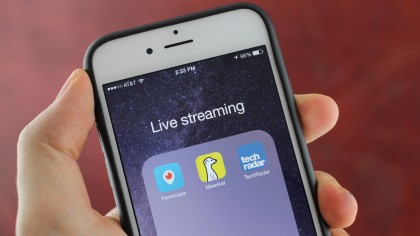
Live streaming or let die
Live from your mobile phone, it's either Periscope for Meerkat. The two video streaming apps are the latest social media sensations to broadcast real-time video.
Turning everyone into an on-the-scene reporter, Meerkat made its officially debut at SXSW Interactive Festival this month. It links to your Twitter account for easy sharing to existing followers.
Periscope launched today with the same basic purpose, only it has official Twitter backing. It was purchased by social media company for a reported $100 million (about £67m, AU$128m).
It's difficult enough to broadcast with one of these new apps without distraction, so using both at the same time is out. It's time for our Periscope vs Meerkat comparison.
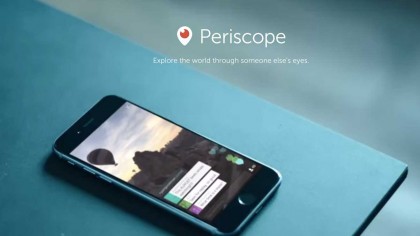
What are Periscope and Meerkat?
Both video streaming apps let you see through someone else's eyes. This makes them ideal for large, but distant events, like protests, or as we saw today, New York City building fires.
Of course, for every critical-viewing event, there are a dozen meaningless salad making or one-second "Test" live streaming videos for the new services. That's to be expected.
It reminds me of the advent of cable news. CNN founder Ted Turner was once asked "Aren't you, with live all the time...gonna wind up covering a lot of one-alarm fires?"
He responded, "Until it's over, you never know whether it was a one-alarm fire or the fire that burned down Chicago." Meerkat and Periscope could be the next-generation version of this.
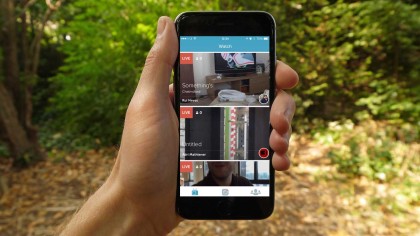
Periscope vs Meerkat: Compatibility
Both Periscope and Meerkat have launched iOS apps, and the developers behind these two live video streaming services are promising Android support "soon."
Periscope has the backing of Twitter and Meerkat has solid funding behind it, so there's an urgency to follow through on this promise. After all Google-powered now dominate phones.
Whichever app gets there first may win this live streaming video space race.
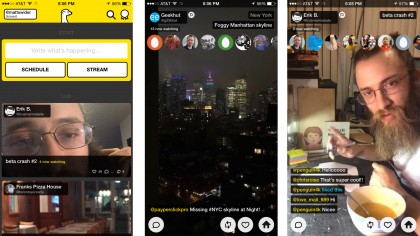
Meerkat: Interface
Meerkat is a lot busier looking than Periscope. A lot busier. The interface displays the broadcaster's name, their Twitter handle and viewer count in the top left corner. The city they're streaming from and the title of their broadcast are in the top right corner.
That's not all. There's also an always-present sliding menu of every watcher's profile pic. It conveniently brings the broadcaster and viewers together, streaming-face to still-face.
Comments look congested on Meerkat, but can be more engaging. That's because you can scroll back through the black-outlined text. On Periscope, comments quickly disappear.
One thing that people dislike is Meerkat's deeper Twitter integration, which can SPAM your Twitter page with a bunch of @ replies, as every comment is tweeted. That's not fun.
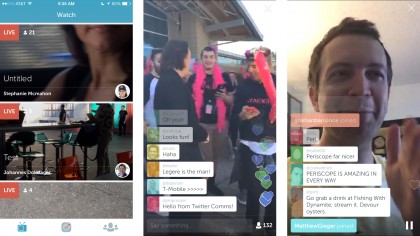
Periscope: Interface
Periscope has launched with a cleaner interface, which looks great for capturing live video. But it may be a little too clean for my liking.
As a viewer, there's only an easy-to-miss X in the top corner to close a stream. The viewer list and broadcaster information are hidden within a menu access via a left swipe.
Comments and viewer count are tucked away at the bottom, and comments disappear after a few short seconds. It's harder to disappearing text as a broadcaster.
Hearts can be "given" to a Periscope broadcaster when a viewer taps the screen. It seems meaningless, but it's a really helpful way to instantly tell the host that you like what you see.
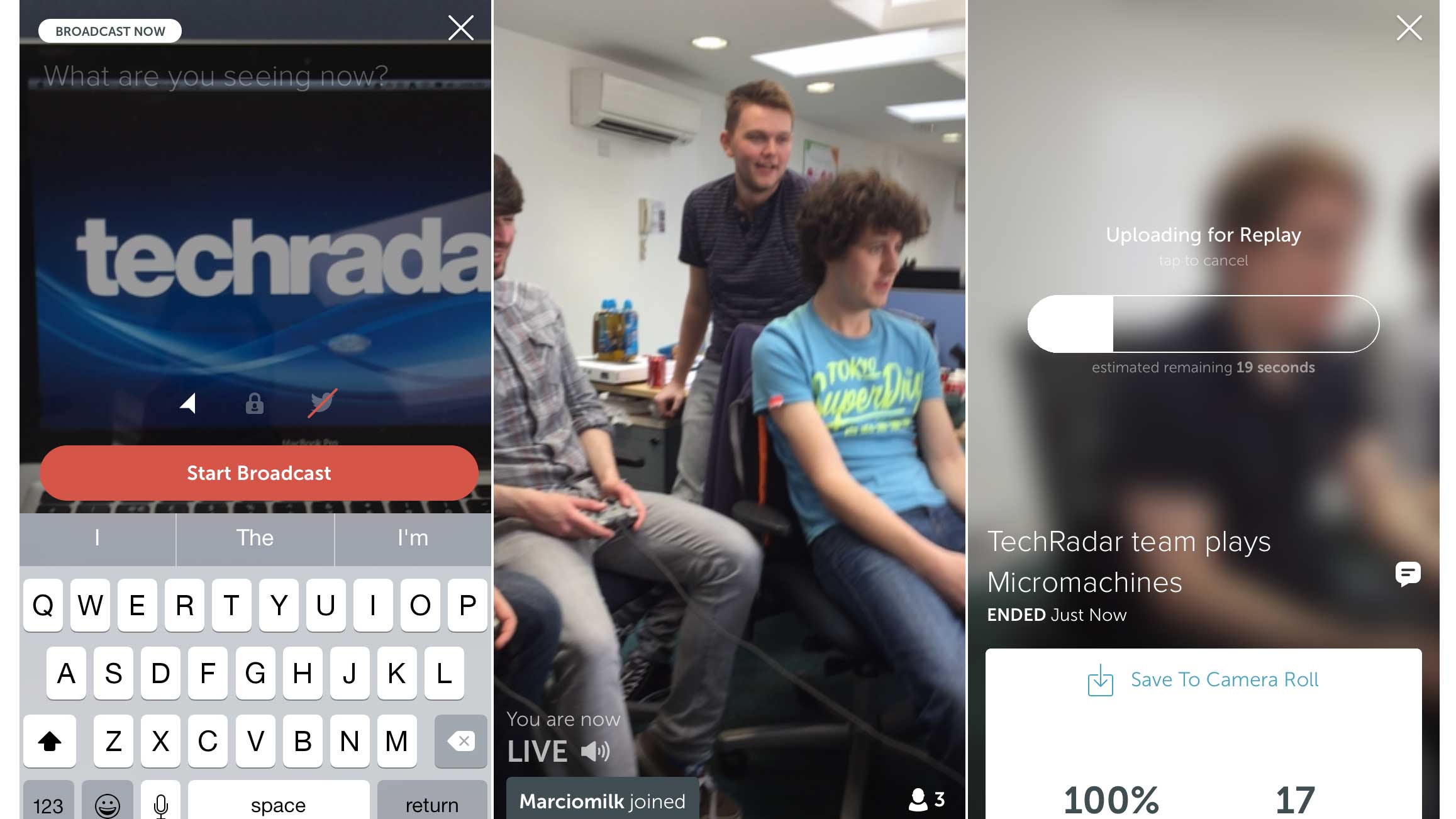
Periscope vs Meerkat: Features
The biggest advantage to Periscope is that you can archive clips for viewing them on the web. This isn't completely automatic, however, as I sadly found out in my first, now-lost broadcast.
Meerkat did give me the option to save my broadcast to my iPhone 6 camera roll, but it doesn't support sharing these clips within the app beyond the live stream.
I expect this to change. For now, though, Meerkat is a bit like Snapchat. Video of your broadcast is unlikely to get out there, but it's still possible for other people to capture it nefariously.
Meerkat does let you schedule broadcasts, which is very helpful for fans finding broadcasters and broadcasters reaching new fans. It's easier to build an audience. It also lets you use the iPhone's flash to light dark videos.
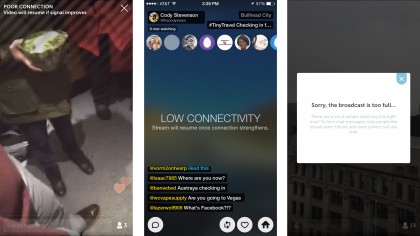
Periscope vs Meerkat: Video quality and connection
Video quality on Meerkat and Periscope greatly depend on your connection. With so many videos taken on the road, it's obvious that LTE isn't ready to live streaming the masses.
This is further complicated by dropped frames (and audio) when switching between front and back cameras on both apps, as all talking heads like to do. Both apps are guilty of this.
Periscope also had the distinct problem of hiding battery life and WiFi connection icons at the top of my iPhone. I found it hard to tell when I switched from WiFi to LTE unless viewers asked me if that just happened. Smart TechRadar viewers.

Periscope vs Meerkat: Broadcasters
Periscope looks a little more refined, and so far its early adopters are less annoying. That can of course change beyond day one of the app's existence.
Meerkat is chock full of whinny people with first world problems, but that may be because it has been available since the top of the month.
Periscope has time to catch up. Pretty soon it too will be full of people complaining about their day on the way home from work, broadcasting and driving at the same time. Why?!
You'll find more legitimate news organizations on Meerkat right now because of the newness of Periscope. A lot of cutting-edge publications are using both apps side-by-side.
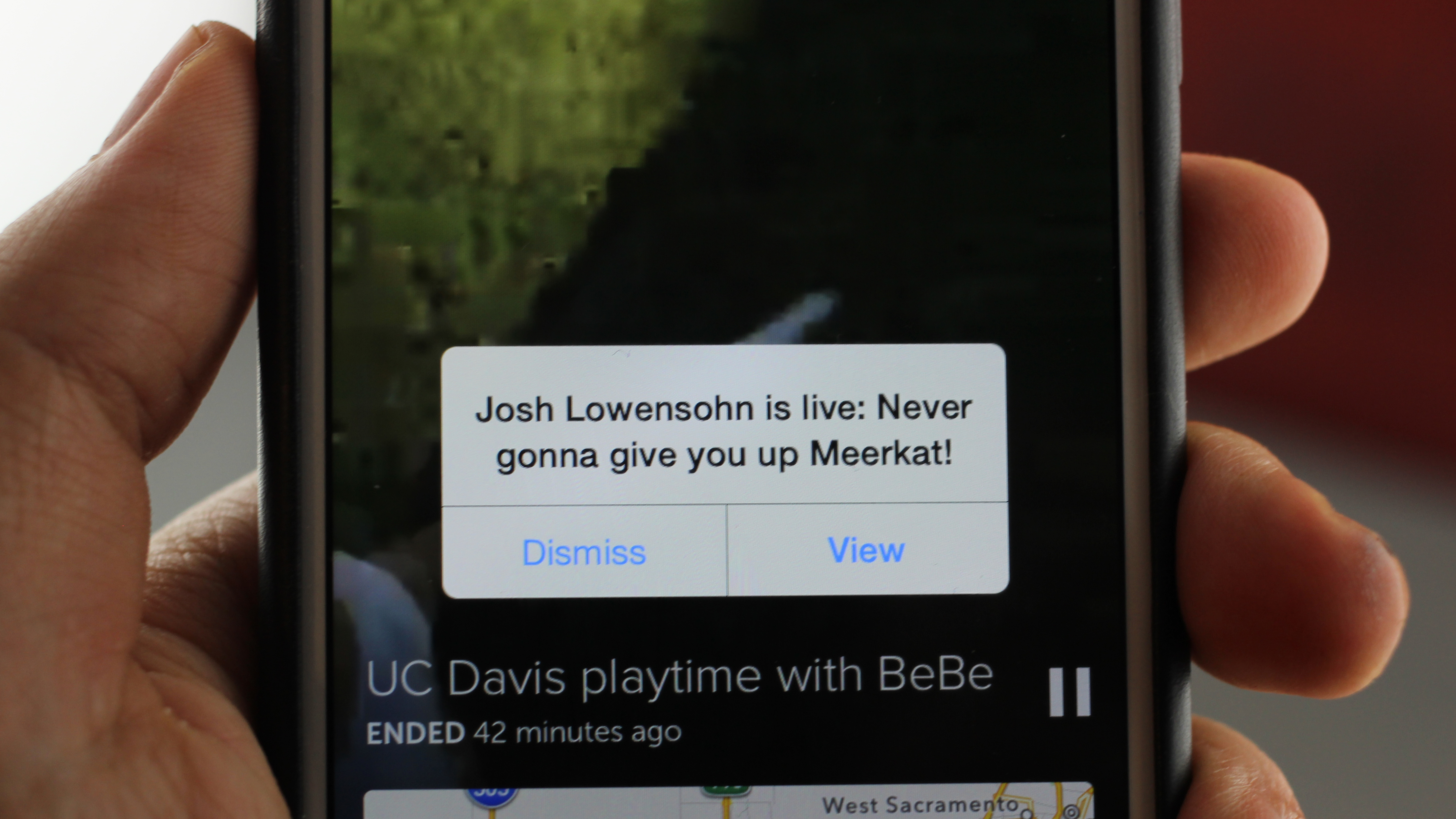
Periscope vs Meerkat wrap-up
Today's Periscope vs Meerkat comparison reminds me of 2013's Vine vs Instagram launch. Both services ushered in short-form video capturing apps with back-to-back launches.
These are two very experimental apps that will likely be tweaked based on user feedback. Periscope, for example, has already toned down the mass notifications it sends.
It'd be nice for Meerkat is get a cleaner interface and Periscope to figure out a way to keep comments longer without cluttering the screen space.
In a perfect world, in the words of TechRadar's Michelle Fitzsimmons, we'd have Meerscope. Or Perikat.
